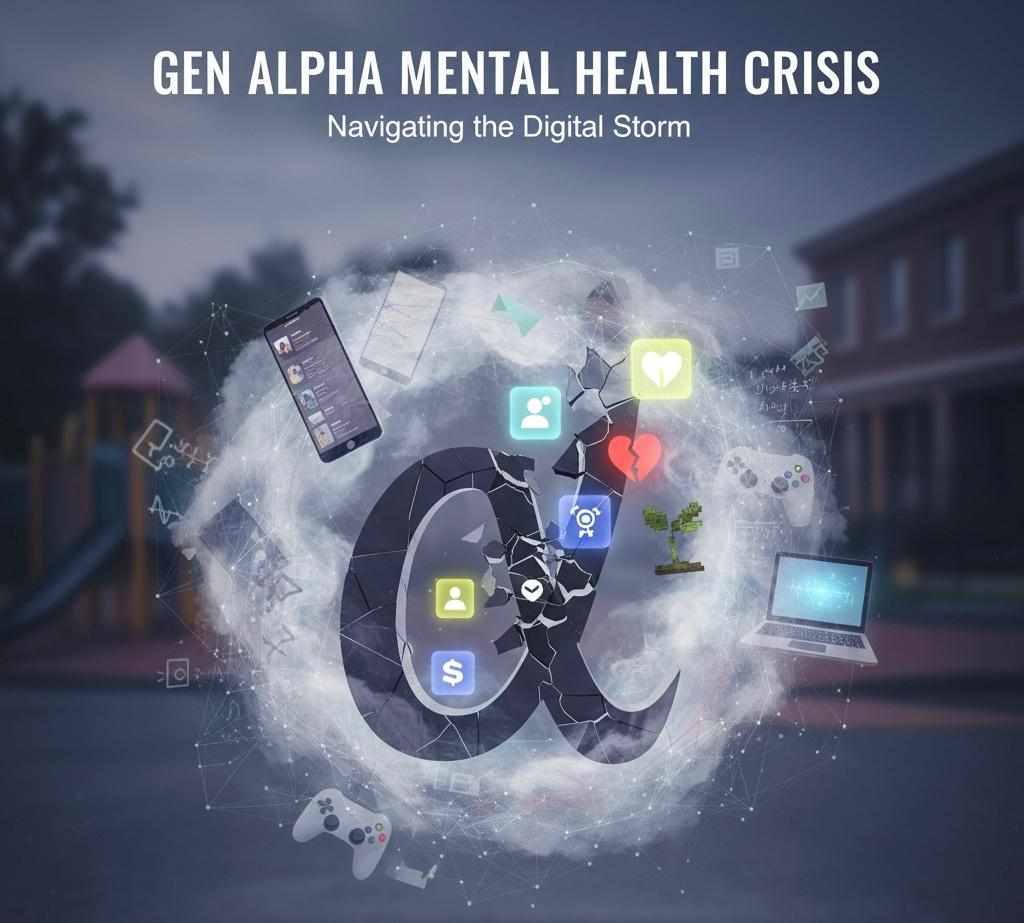Burnout is a state of physical, emotional, and mental exhaustion caused by prolonged exposure to stressors in the workplace. It can significantly impact an individual’s health, well-being, and performance. Understanding the signs of burnout is crucial for early intervention and effective management. This article explores the symptoms of burnout, its causes, and strategies to prevent and address it, supported by scientific research and expert insights.
Understanding Burnout
Definition
Burnout is defined by the World Health Organization (WHO) as an occupational phenomenon resulting from chronic workplace stress that has not been successfully managed. It is characterised by three key dimensions: feelings of energy depletion or exhaustion, increased mental distance from one’s job or feelings of negativism or cynicism related to one’s job, and reduced professional efficacy (WHO, 2019).
Prevalence
Burnout is a common issue affecting employees across various industries. A survey conducted by the Australian Psychological Society (2019) reported that approximately one in five Australians experience high levels of workplace stress, which can lead to burnout if not addressed.
Signs of Burnout
Physical Symptoms
- Exhaustion: Persistent fatigue that does not improve with rest. This can manifest as a constant feeling of tiredness and a lack of energy to perform daily tasks (Maslach & Leiter, 2016).
- Sleep Disturbances: Difficulty falling asleep, staying asleep, or experiencing restorative sleep. Insomnia or oversleeping are common signs of burnout (Melamed et al., 2006).
- Frequent Illness: Lowered immunity leading to frequent colds, infections, or other illnesses. Chronic stress can weaken the immune system, making individuals more susceptible to health problems (Dhabhar, 2014).
- Headaches and Muscle Pain: Persistent headaches, back pain, and muscle tension, often resulting from physical stress and prolonged periods of sitting or poor posture (Shariat et al., 2019).
Emotional Symptoms
- Emotional Exhaustion: A feeling of being emotionally drained and depleted, with an inability to cope with daily demands (Maslach & Leiter, 2016).
- Increased Irritability: Heightened sensitivity to stress, leading to irritability, frustration, and anger over minor issues (Shirom, 2003).
- Sense of Failure: Persistent feelings of inadequacy, self-doubt, and a lack of accomplishment, often despite evident achievements (Schaufeli & Enzmann, 1998).
- Detachment: Feeling disconnected or detached from work and personal life, often accompanied by a sense of isolation (Maslach & Leiter, 2016).
Cognitive Symptoms
- Difficulty Concentrating: Struggling to focus, make decisions, or complete tasks efficiently. Cognitive impairment is a common symptom of burnout (Sonnentag et al., 2010).
- Memory Problems: Experiencing forgetfulness and difficulty retaining information, often related to the overwhelming stress and mental fatigue (Sandström et al., 2005).
Behavioural Symptoms
- Reduced Performance: A noticeable decline in work performance, productivity, and the quality of output (Leiter & Maslach, 2005).
- Withdrawal from Responsibilities: Avoiding work-related tasks, meetings, and social interactions due to a lack of motivation and energy (Schaufeli & Enzmann, 1998).
- Procrastination: Delaying tasks and responsibilities, often due to feeling overwhelmed and unable to manage the workload (Taris et al., 2017).
- Increased Absenteeism: Frequent sick days or unplanned leave as a means of escaping work-related stress (Bakker et al., 2004).
Causes of Burnout
Work-Related Factors
- Work Overload: Excessive workload and unrealistic deadlines can lead to chronic stress and burnout (Maslach & Leiter, 2016).
- Lack of Control: Limited autonomy and control over work tasks and decisions can contribute to feelings of helplessness and burnout (Schaufeli & Bakker, 2004).
- Insufficient Rewards: Lack of recognition, rewards, and support from supervisors and colleagues can diminish motivation and increase burnout risk (Maslach et al., 2001).
- Poor Work-Life Balance: Difficulty balancing work demands with personal life responsibilities can exacerbate stress and lead to burnout (Hobfoll & Shirom, 2001).
Personal Factors
- Perfectionism: High personal standards and perfectionistic tendencies can increase vulnerability to burnout (Stoeber & Rennert, 2008).
- Lack of Social Support: Insufficient support from family, friends, and colleagues can leave individuals feeling isolated and overwhelmed (Leiter & Maslach, 2005).
- Coping Style: Ineffective coping mechanisms, such as avoidance or denial, can hinder stress management and contribute to burnout (Shirom, 2003).
Addressing and Preventing Burnout
Strategies for Individuals
- Self-Care: Prioritising physical and mental health through regular exercise, healthy eating, sufficient sleep, and relaxation techniques (Salmon, 2001).
- Setting Boundaries: Establishing clear boundaries between work and personal life to ensure adequate time for rest and leisure (Hobfoll & Shirom, 2001).
- Seeking Support: Reaching out to friends, family, and mental health professionals for emotional and practical support (Leiter & Maslach, 2005).
- Developing Resilience: Building resilience through mindfulness, stress management techniques, and positive thinking (Richardson, 2002).
Strategies for Employers
- Promoting Work-Life Balance: Encouraging flexible work arrangements and providing resources to support employees in balancing work and personal responsibilities (Kossek et al., 2011).
- Reducing Workload: Ensuring that workloads are manageable and that employees have the resources they need to complete their tasks (Maslach & Leiter, 2016).
- Providing Recognition and Rewards: Acknowledging and rewarding employees’ efforts and achievements to enhance motivation and job satisfaction (Schaufeli & Bakker, 2004).
- Fostering a Supportive Work Environment: Creating a positive workplace culture that encourages open communication, collaboration, and support among employees (Maslach et al., 2001).
Conclusion
Burnout is a serious issue that affects many individuals in the workplace. By recognising the physical, emotional, cognitive, and behavioural signs of burnout, individuals can take steps to manage their stress levels and improve their overall well-being. Employers also play a critical role in preventing burnout by creating supportive work environments and promoting a healthy work-life balance. Through early intervention and appropriate strategies, burnout can be effectively managed, leading to a more productive and satisfied workforce.
By understanding and addressing burnout, both individuals and organisations can foster a healthier, more sustainable approach to work and life.
References
- Australian Psychological Society. (2019). Stress and wellbeing: How Australians are coping with life. Retrieved from https://www.psychology.org.au
- Bakker, A. B., Demerouti, E., de Boer, E., & Schaufeli, W. B. (2003). Job demands and job resources as predictors of absence duration and frequency. Journal of Vocational Behavior, 62(2), 341-356.
- Dhabhar, F. S. (2014). Effects of stress on immune function: the good, the bad, and the beautiful. Immunologic Research, 58(2-3), 193-210.
- Hobfoll, S. E., & Shirom, A. (2001). Conservation of resources theory: Applications to stress and management in the workplace. Handbook of organizational behavior. Marcel Dekker.
- Kossek, E. E., Pichler, S., Bodner, T., & Hammer, L. B. (2011). Workplace social support and work-family conflict: A meta-analysis clarifying the influence of general and work-family-specific supervisor and organizational support. Personnel Psychology, 64(2), 289-313.
- Leiter, M. P., & Maslach, C. (2005). Banishing burnout: Six strategies for improving your relationship with work. Jossey-Bass.
- Maslach, C., & Leiter, M. P. (2016). Understanding the burnout experience: recent research and its implications for psychiatry. World Psychiatry, 15(2), 103-111.
- Maslach, C., Schaufeli, W. B., & Leiter, M. P. (2001). Job burnout. Annual Review of Psychology, 52(1), 397-422.
- Melamed, S., Shirom, A., Toker, S., Berliner, S., & Shapira, I. (2006). Burnout and risk of cardiovascular disease: evidence, possible causal paths, and promising research directions. Psychological Bulletin, 132(3), 327.
- Richardson, G. E. (2002). The metatheory of resilience and resiliency. Journal of Clinical Psychology, 58(3), 307-321.
- Salmon, P. (2001). Effects of physical exercise on anxiety, depression, and sensitivity to stress: A unifying theory. Clinical Psychology Review, 21(1), 33-61.
- Schaufeli, W. B., & Bakker, A. B. (2004). Job demands, job resources, and their relationship with burnout and engagement: A multi-sample study. Journal of Organizational Behavior, 25(3), 293-315.
- Schaufeli, W. B., & Enzmann, D. (1998). The burnout companion to study and practice: A critical analysis. CRC press.
- Shariat, A., Cleland, J. A., Danaee, M., Alizadeh, M., Naghavi, N., Seif, A. S., & Hakakzadeh, A. (2019). Effects of stretching exercise training and ergonomic modifications on musculoskeletal discomforts of office workers: a randomized controlled trial. Brazilian Journal of Physical Therapy, 23(2), 105-113.
- Shirom, A. (2003). Job-related burnout: A review. Handbook of occupational health psychology, 245-264.
- Sonnentag, S., Binnewies, C., & Mojza, E. J. (2010). Staying well and engaged when demands are high: The role of psychological detachment. Journal of Applied Psychology, 95(5), 965.
- Stoeber, J., & Rennert, D. (2008). Perfectionism in school teachers: Relations with stress appraisals, coping styles, and burnout. Anxiety, Stress, & Coping, 21(1), 37-53.
- Taris, T. W., Schaufeli, W. B., & Verhoeven, L. C. (2017). Learning and working: An introduction to occupational health psychology. Occupational Health Psychology, 3-28.
- World Health Organization. (2019). Burn-out an “occupational phenomenon”: International Classification of Diseases. Retrieved from https://www.who.int/news/item/28-05-2019-burn-out-an-occupational-phenomenon-international-classification-of-diseases
How to get in touch
If you or your NDIS participant need immediate mental healthcare assistance, feel free to get in contact with us on 1800 NEAR ME – admin@therapynearme.com.au.







